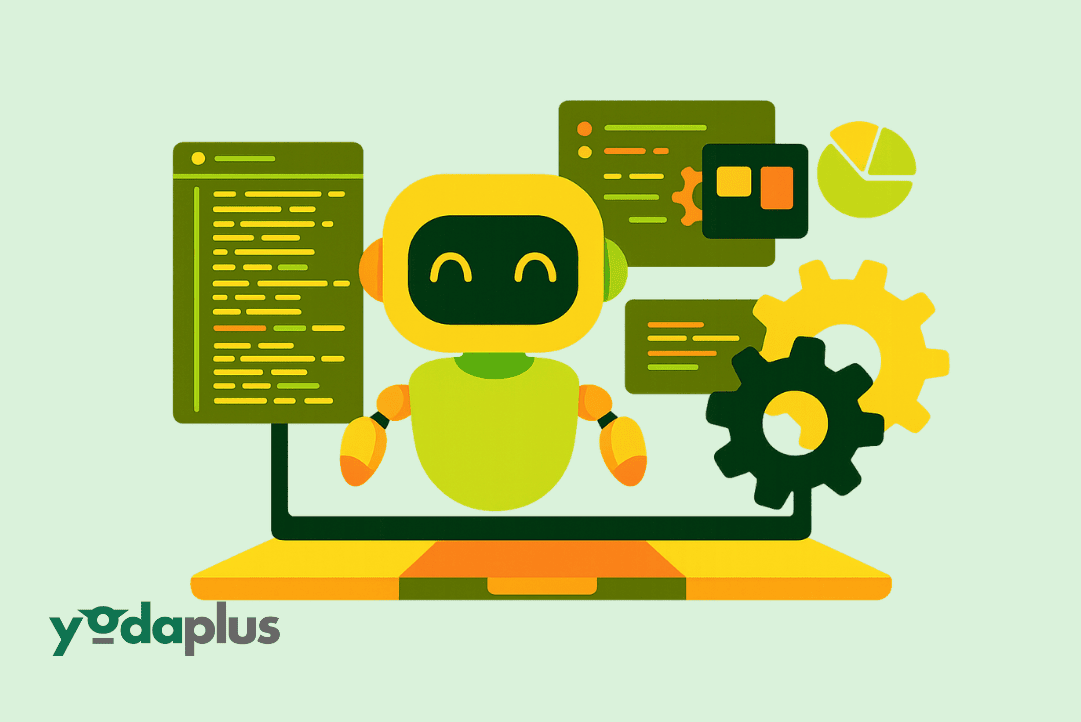
Visual Debugging Tools for Recursive Agentic AI Loops
November 19, 2025 By Yodaplus
Recursive loops are common in agentic AI, especially when multiple AI agents depend on each other to complete tasks. These loops happen when an agent repeats the same reasoning cycle or triggers another agent that sends the task back to the first. Without proper visibility, the loop continues unnoticed. This affects accuracy, speed, and reliability. Visual debugging tools bring transparency into these hidden cycles.
Modern workflows use multiple components such as LLMs, machine learning models, and agentic ai frameworks like Crew AI, MCP based tools, and Autogen. As the complexity grows, so does the risk of recursive loops. Visual tools simplify this problem by showing the sequence of steps that AI agents take. This helps developers understand why a loop happened and how to fix it.
Why Recursive Loops Happen in Agentic Systems
Recursive loops often start with unclear goals or incomplete context. For example, one AI agent may request more information, and the second agent may respond with more tasks. Without proper rules inside the agentic framework, both agents fall into repeated cycles. This affects AI-powered automation, multi-agent systems, and workflow agents used in logistics, retail, finance, and technical environments.
Another cause is missing context inside LLM reasoning. When an LLM does not find the answer it expects, it sends the task back into the chain. The system keeps cycling. This happens in both generative AI tools and agentic ai platforms.
Visual debugging gives a clear picture of these routes. It shows which agent called another, how many steps occurred, and where the cycle started.
Why Visual Debugging Tools Improve Observability
Teams building autonomous agents need more than logs. They need structured visual maps that show the entire chain of decisions. Visual debugging tools give a timeline that shows each message, each prompt, and each output. This creates better observability inside complex agent workflows.
These visual tools also help users compare a recursive loop with a normal workflow. Developers can identify the exact point where the process changed direction. For example, they can see how NLP steps, prompt engineering, or vector embeddings influenced agent behavior.
Visual debugging also helps with reliable AI practices. It supports AI risk management, explainable AI, and traceable AI-driven analytics. In a multi-agent system or autonomous system, this level of detail is essential for safety and consistency.
How Visual Tools Support MCP and Agent Frameworks
Modern frameworks like MCP, Crew AI, LangChain, and Autogen allow multiple agents to coordinate tasks. These frameworks are powerful, but they make loops more likely because agents communicate through shared protocols and workflows.
Visual tools give an overview of the MCP request flow. They show how agents use context objects, how messages travel between components, and how retries happen. This is helpful when comparing mcp vs langchain, autogen vs langchain, and other agentic framework architectures.
Visual debugging also helps identify where agents use too many generative AI steps. This often creates loops. It also shows how deep learning models or self-supervised learning components influence agent actions.
With these insights, developers can adjust the agent policies and avoid repeated cycles. They can also redesign prompts or add more strict rules around termination.
Using Logs and Visual Graphs to Detect Failures
Visual debugging tools often come with detailed logs. These logs document every step of the AI workflows. Developers can then map logs into visual graphs. This makes it easier to understand long sequences that would be difficult to track manually.
A graph can highlight:
-
repeated decision chains
-
unnecessary back and forth between workflow agents
-
long reasoning loops
-
missing context
-
weak coordination rules
This process turns raw text logs into meaningful visual insights. It makes multi-agent coordination easier to manage. It also improves the quality of AI applications used in logistics, supply chain optimization, retail planning, and other technical fields.
Improving Reliability in Agentic AI Systems
When developers understand recursive loops, they can reduce noise inside the system. They can set stronger rules for context, add better constraints to an AI agent, or adjust parameters for LLM behavior. This creates more reliable AI and improves both accuracy and performance.
Better reliability supports AI in logistics, digital retail solutions, financial modeling, and other areas that depend on complex agent workflows. Visual debugging tools make all these improvements easier because they show what went wrong and why.
Another advantage is that visual debugging supports responsible AI practices. It ensures that each workflow is safe, predictable, and aligned with business goals. This helps organizations adopt artificial intelligence in business with confidence.
How Visual Debugging Tools Help Teams
Teams using agentic ai tools or agentic ai platforms benefit in many ways:
-
Faster root cause detection
-
Easier communication across teams
-
Better training of new developers
-
Clearer tracking of agent behavior
-
Improved accuracy in LLM based workflows
These improvements help reduce the cost and time required to maintain advanced AI systems. They also support future scalability for multi-agent environments.
The Future of Visual Debugging in Agentic AI
As agentic ai capabilities grow, visual debugging will become a standard requirement. Multi-agent systems will use more advanced semantic search, neural networks, and NLP pipelines. Visual tools will help map all of these processes in a simple and intuitive way.
Emerging tools will also support hybrid use cases that combine recursive agent reasoning with communication. This will make it easier to diagnose complex coordination problems. It will also support advanced agentic ai use cases in logistics, finance, retail, and supply chain.
Conclusion
Visual debugging tools give clarity inside recursive agent loops. They improve observability and make it easier to manage multi-agent workflows. They also strengthen reliable AI practices, reduce risk, and support better coordination inside agentic ai systems.
With stronger visualization, teams can build intelligent agents that are more predictable, more stable, and more aligned with business goals. This leads to better outcomes across domains such as logistics, technical operations, retail planning, and advanced AI-driven analytics.